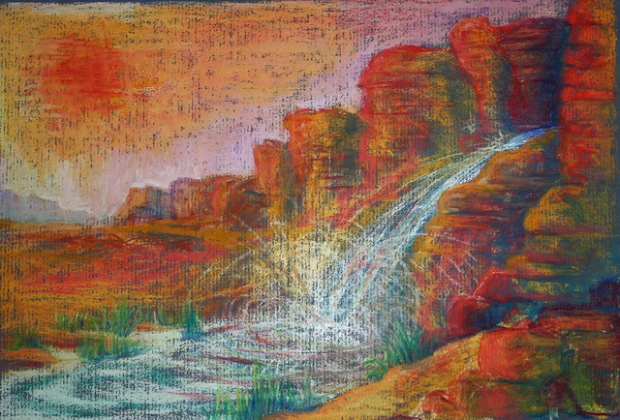START WITH SCRIPTURE:
John 1:6-8, 19-28
CLICK HERE TO READ SCRIPTURE ON BIBLEGATEWAY.COM
OBSERVE:
The Prologue to the Gospel of John, which comprises John 1:1-18, is one of the more majestic passages in all of Scripture. But in this selection the Gospel writer is seeking to clarify the relationship of John the Baptist with the Messiah.
There are many who believe that John’s followers formed an early rivalry with the disciples who followed Jesus. This is understandable. John was a dynamic, charismatic and prophetic fellow who spoke truth to power and summoned a spiritually hungry people to renewal.
However, as the Gospel of John makes clear, and then John the Baptist himself insists, he is not the Messiah.
As the Prologue makes clear, John the Baptist is not the light but only bears witness to the light. The identity of the light has already been revealed as the preexistent Christ, who was present at the beginning and through whom and for whom creation was made:
In him was life, and the life was the light of men. The light shines in the darkness, and the darkness hasn’t overcome it (John 1:4-5).
John the Baptist himself insists that he is not the Christ. Interestingly, verses 19-28 introduce the dialogue form that is so common in the Gospel of John. There is in these dialogues a sense of debate — a conflict is introduced and then resolved.
In this case, Jewish leaders in Jerusalem have become aware of John’s ministry, and so they send a “Committee on Investigation” to ask him some questions. Their first question is insinuating and indirect:
Who are you?
John’s response is direct — he tells them he is not the Messiah, nor even a prophet. So then, they want to know, just who do you think you are? And John answers with the prophetic text from Isaiah 40:3:
I am the voice of one crying in the wilderness, ‘Make straight the way of the Lord,’ as Isaiah the prophet said.
This is the text cited by the other three Gospel writers as well in reference to John’s unique relationship to Jesus.
John clearly sees his role as preparing the way for the Messiah by calling the people to repentance.
When asked then why he baptizes, he answers with a cryptic response. He doesn’t answer their question directly. Instead, John tells them that the Messiah is already among them, and they don’t realize it.
The “Committee on Investigation” may have asked this question because baptism was certainly not unknown to the Jewish religion. A Gentile who converted to Judaism not only had to be circumcised but also baptized as a sign that he was “born anew.” And of course the Essene Community at Qumran by the Dead Sea practiced ritual washing.
But John was baptizing those who were already Jews! They were already part of the covenant! What authority did he have to do such a thing? Again, John is making clear that his ministry is a preparation for the ministry of the Messiah. Therefore he doesn’t seem to find it necessary to explain himself to the priests and Levites.
APPLY:
Perhaps the greatest service we can provide is to be a little like John the Baptist. I don’t mean that we should wear camel’s hair and eat locusts and wild honey, or even that we should go around baptizing people willy-nilly.
No, perhaps one of the greatest services we can provide is to prepare others for the coming of Christ into their lives. We can tell others that Christ is already among us — they need only turn to him in faith. We, like John, can bear witness to the light that has come into the world.
What a difference it might make if each Christian made an effort to point others to Christ, and to say “I am not the focus here, Christ is!”
I recall years ago going into a restaurant and seeing on the menu words to this effect: “If you meet me and forget me, you have lost nothing. But if you meet Jesus Christ and forget Him you have lost everything.” It was signed by the late owner of the restaurant, who was still making a witness by that aphorism long after his own death!
RESPOND:
I must remember that the goal of my life is to bear witness not to myself or my meager accomplishments, but to point only toward Christ as the meaning and purpose of life.
Our Lord, empower me to be a witness to your coming into the world. I don’t need to argue with other people about my authority, or who I am. I just need to direct their attention to you. Amen.
PHOTOS:
“john the baptist” by romana klee is licensed under a Creative Commons Attribution-ShareAlike 2.0 Generic license.



